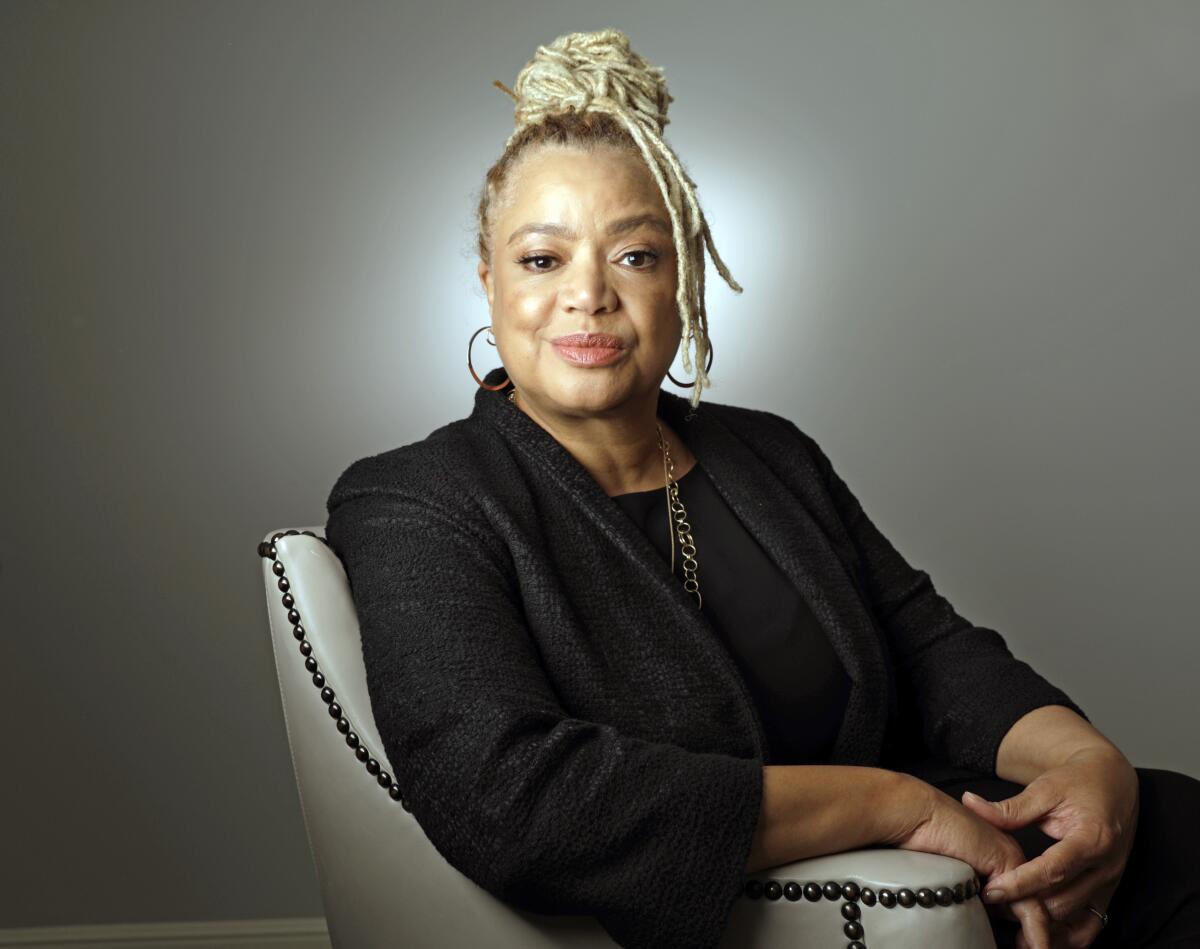Director Kasi Lemmons found the inherent ‘great adventure’ that is Harriet Tubman

- Share via
For director Kasi Lemmons, the road to “Harriet” started with two photographs. Producers sent her pictures of British actress Cynthia Erivo alongside a recently uncovered black-and-white image of Underground Railroad heroine Harriet Tubman. The resemblance was striking.
“I was like, OK, this could work,” recalls the Harlem-based filmmaker, in L.A. recently to attend the “Harriet” premiere. Erivo, coming off her star turn in a London production of “The Color Purple” musical, had already signed on to play Tubman. Lemmons, who made her acclaimed directorial debut in 1997 with “Eve’s Bayou” followed by “The Caveman’s Valentine” and “Talk to Me,” wanted to check out Erivo.
So Lemmons met her star for the first time at Manhattan’s Russian Tea Room. “When Cynthia walked in, I could see she was tiny but muscular and very feminine,” Lemmons recalls. “Once we began talking, I got the fire in Cynthia’s eyes and the passion in her voice. But even with the work and rehearsal we did together, I wasn’t sure if the magical alchemy would take place until I saw Cynthia in her ‘mission’ outfit, the one you see in the poster. That’s when I knew: Cynthia is Harriet.”
By the time Erivo’s character dons that dramatic cape and cap, she’s known as Moses to her freedom-seeking followers. Fierce and fleet-footed, this version of Harriet Tubman captivated Lemmons.
“One of the things that sometimes happens with African American heroes is that their edge gets taken off. They get kind of warm and fuzzy. My mission was to bring Harriet Tubman to life as a young woman when she’s doing the most heroic work.”
A former history major at UCLA, Lemmons co-wrote the script with Gregory Allen Howard after poring over such books as “Harriet Tubman: Imagining a Life,” “Harriet Tubman: The Road to Freedom” and “Bound for Canaan: The Epic Story of the Underground Railroad.”
Her conclusion: “All the elements of a great adventure film are right there in the Harriet Tubman story. It’s about a woman who was running a whole lot of her life so action did not have to be imposed. It’s inherent. The jeopardy, the movement, the courage, that’s all inherent and we wanted to let that play out on screen because we need our female hero stories. This one is about a tiny black woman who did incredible things.”
Lemmons’ “Harriet” opens on a happy encounter in 1849 when Harriet, then known by her slave name Minty, wakes from a fainting spell to greet her husband with a radiant smile. From there, it’s pretty solemn going.
“We studied Harriet’s face and her downturned mouth and the depth in her eyes,” Lemmons explains. “She wasn’t joyless but Harriet Tubman was a serious person. She had her heart broken, she felt tremendous pain, she suffered loss, and she carried the weight of her family on her shoulders. We made the decision not to look at Harriet Tubman through a nostalgic lens but to bring her to life almost as a contemporary person. We can all relate to heartbreak. We can relate to loss. We can all relate to love of family.”
“Harriet” was shot by Oscar-winning director of photography John Toll (“Legends of the Fall”) during an unseasonably cold, wet autumn in the state of Virginia, not far from the Maryland plantation where Tubman worked before fleeing through 100 miles of wilderness to Philadelphia.
During one frigid night shoot, Erivo waded shoulder-deep into near-freezing water to reenact the time Tubman led her followers across a river of undetermined depth. “Cynthia and I talked about wanting to show what it really felt like to be freedom-seeking slaves in the woods in the winter when the nights were longest and they were being pursued,” Lemmons says.
A couple of days earlier, cast members managed to stay in character running across a field of hornets.
“In the film we see this beautiful shot of freedom seekers following Harriet through the woods. What you don’t see is that those actors ran into a hive of ground hornets and everybody got stung. I mean, they flew up the period costumes. So right after I said ‘cut,’ Cynthia kicked in like the general that she is, nursing all the actors, applying poultices, ordering people around. The way she took care of everybody in that moment, Cynthia was very Harriet.”
More to Read
Only good movies
Get the Indie Focus newsletter, Mark Olsen's weekly guide to the world of cinema.
You may occasionally receive promotional content from the Los Angeles Times.










